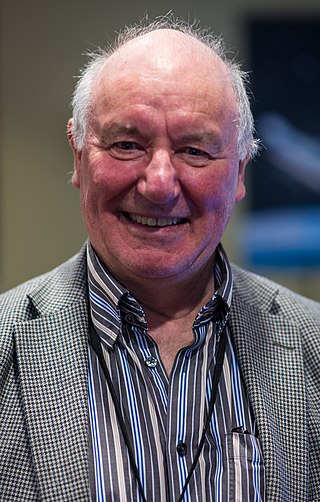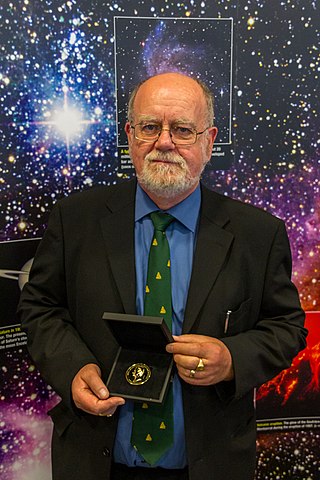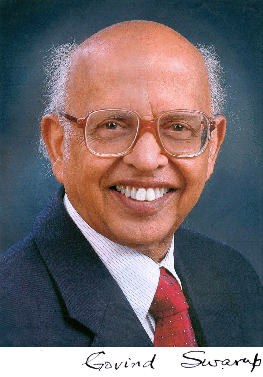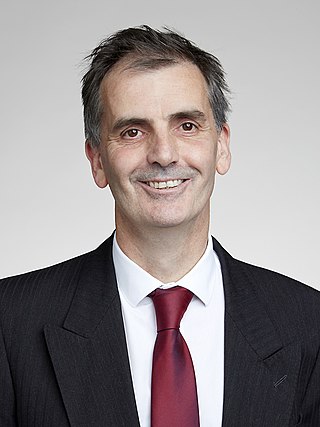
Sandra Moore Faber is an American astrophysicist known for her research on the evolution of galaxies. She is the University Professor of Astronomy and Astrophysics at the University of California, Santa Cruz, and works at the Lick Observatory. She has made discoveries linking the brightness of galaxies to the speed of stars within them and was the co-discoverer of the Faber–Jackson relation. Faber was also instrumental in designing the Keck telescopes in Hawaii.

The Royal Astronomical Society (RAS) is a learned society and charity that encourages and promotes the study of astronomy, solar-system science, geophysics and closely related branches of science. Its headquarters are in Burlington House, on Piccadilly in London. The society has over 4,000 members, known as fellows, most of whom are professional researchers or postgraduate students. Around a quarter of Fellows live outside the UK.

Eleanor Margaret Burbidge, FRS (née Peachey; 12 August 1919 – 5 April 2020) was a British-American observational astronomer and astrophysicist. In the 1950s, she was one of the founders of stellar nucleosynthesis and was first author of the influential B2FH paper. During the 1960s and 1970s she worked on galaxy rotation curves and quasars, discovering the most distant astronomical object then known. In the 1980s and 1990s she helped develop and utilise the Faint Object Spectrograph on the Hubble Space Telescope. Burbidge was also well known for her work opposing discrimination against women in astronomy.

Dame Susan Jocelyn Bell Burnell is an astrophysicist from Northern Ireland who, as a postgraduate student, discovered the first radio pulsars in 1967. The discovery eventually earned the Nobel Prize in Physics in 1974; however, she was not one of the prize's recipients.

William Lassell was an English merchant and astronomer. He is remembered for his improvements to the reflecting telescope and his ensuing discoveries of four planetary satellites.

Agnes Mary Clerke was an Irish astronomer and writer, mainly in the field of astronomy. She was born in Skibbereen, County Cork, Ireland, and died in London.

Monthly Notices of the Royal Astronomical Society (MNRAS) is a peer-reviewed scientific journal covering research in astronomy and astrophysics. It has been in continuous existence since 1827 and publishes letters and papers reporting original research in relevant fields. Despite the name, the journal is no longer monthly, nor does it carry the notices of the Royal Astronomical Society. MNRAS publishes more articles per year than any other astronomy journal.

Malcolm Sim Longair is a British physicist. From 1991 to 2008 he was the Jacksonian Professor of Natural Philosophy in the Cavendish Laboratory at the University of Cambridge. Since 2016 he has been Editor-in-Chief of the Biographical Memoirs of Fellows of the Royal Society.

John Campbell Brown was a Scottish astronomer who worked primarily in solar physics. He held the posts of Astronomer Royal for Scotland, the Regius Professor of Astronomy at the University of Glasgow, and honorary professorships at both the University of Edinburgh and the University of Aberdeen.

Professor Anneila Isabel Sargent FRSE DSc is a Scottish–American astronomer who specializes in star formation.

The Royal Observatory, Edinburgh (ROE) is an astronomical institution located on Blackford Hill in Edinburgh. The site is owned by the Science and Technology Facilities Council (STFC). The ROE comprises the UK Astronomy Technology Centre (UK ATC) of STFC, the Institute for Astronomy of the School of Physics and Astronomy of the University of Edinburgh, and the ROE Visitor Centre.
Dame Carole Jordan,, is a British physicist, astrophysicist, astronomer and academic. Currently, she is Professor Emeritus of Astrophysics at the University of Oxford and Emeritus Fellow at Somerville College, Oxford. From 1994 to 1996, she was President of the Royal Astronomical Society; she was the first woman to hold this appointment. She won the Gold Medal of the Royal Astronomical Society in 2005; she was only the third female recipient following Caroline Herschel in 1828 and Vera Rubin in 1996. She was head of the Rudolf Peierls Centre for Theoretical Physics at the University of Oxford from 2003 to 2004 and 2005 to 2008, and was one of the first female professors in Astronomy in Britain. She was made a Dame Commander of the Order of the British Empire in 2006 for services to physics and astronomy.
Andrew Christopher Fabian is a British astronomer and astrophysicist. He was Director of the Institute of Astronomy, University of Cambridge from 2013 to 2018. He was a Royal Society Research Professor at the Institute of Astronomy, Cambridge from 1982 to 2013, and Vice-Master of Darwin College, Cambridge from 1997 to 2012. He served as president of the Royal Astronomical Society from May 2008 through to 2010.

Govind Swarup was a pioneer in radio astronomy. In addition to research contributions in multiple areas of astronomy and astrophysics, he was a driving force behind the building of "ingenious, innovative and powerful observational facilities for front-line research in radio astronomy".
Marek Janusz Kukula is a British astronomer and an author of works on popular science. After gaining a PhD in radio astronomy from the University of Manchester in 1994, he specialised in studying distant galaxies. As his research reached the limits of telescopes, he moved into the field of public engagement. In 2008 he was appointed Public Astronomer at the Royal Observatory Greenwich.
Mary Teresa Brück was an Irish astronomer, astrophysicist and historian of science, whose career was spent at Dunsink Observatory in Dublin and the Royal Observatory Edinburgh in Scotland.

James Scott Dunlop is a Scottish astronomer and academic. He is Professor of Extragalactic Astronomy at the Institute for Astronomy, an institute within the School of Physics and Astronomy at the University of Edinburgh.
Haley Gomez MBE, FRAS, FLSW is a Welsh Professor of Astrophysics at Cardiff University. She studies the formation and evolution of cosmic dust using the Herschel Space Observatory. She is Deputy Head of the School of Physics and Astronomy. She was awarded an Order of the British Empire in the 2018 Queen’s Birthday Honour’s.
The Regius Chair of Astronomy is one of eight Regius Professorships at the University of Edinburgh, and was founded in 1785. Regius Professorships are those that have in the past been established by the British Crown, and are still formally appointed by the current monarch, although they are advertised and recruited by the relevant university following the normal processes for appointing a professorship.

The Astronomical Society of Edinburgh (ASE) is an association of amateur astronomers and other individuals interested in astronomy, which is based in Edinburgh, Scotland. The objectives are to encourage astronomical study and observation and to increase popular interest in astronomy.














